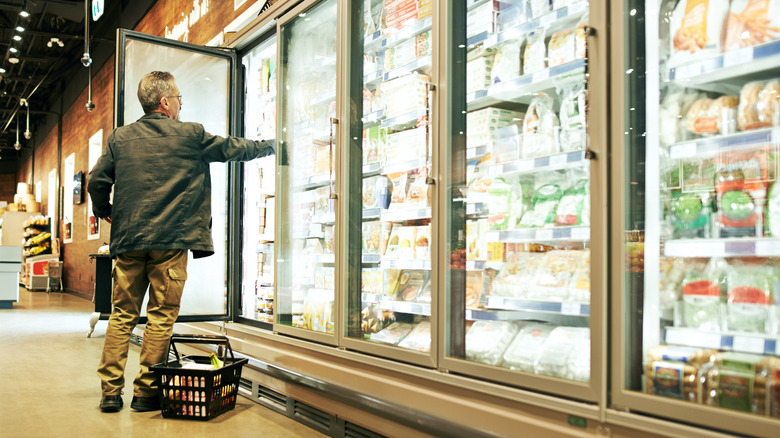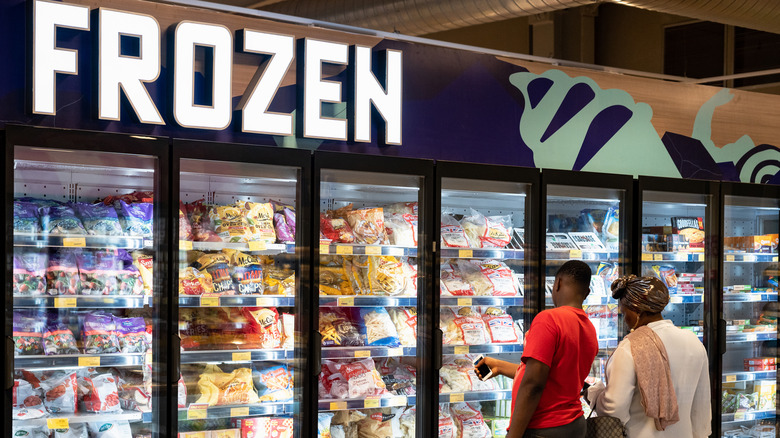Why You Shouldn't Put Unwanted Frozen Food Back In The Grocery Store Freezer
Even when you're excited about the meals ahead, shopping for groceries is a chore. However, there are some dos and don'ts related to supermarket etiquette you might not be well versed with. While you're probably familiar with the obvious ones like refraining from snacking or veering to the right as you peruse the aisles, you might be committing a major (not to mention risky!) faux pas when it comes to dealing with frozen food items you no longer want.
We've all been there before. You picked up a few frozen items that initially seemed a good idea but have since changed your mind. Although you might assume that returning these items to their rightful place in the freezer section is the considerate thing to do, it's not. Putting back these goods can be a safety issue due to the risks associated with defrosting. As frozen foods start to thaw, the USDA reports that they can enter the "danger zone" as extended exposure to room temperatures can accelerate the growth of bacteria like salmonella, E. coli, or campylobacter, which can trigger foodborne illness.
Generally, there is a two-hour cap before frozen items are deemed unsafe and should be tossed. Yet, even though this limit is imposed by many grocery stores, there's no way of monitoring time if customers take it upon themselves to bring half-thawed items back to the frozen aisle. As a result, this sparks the question, what should you do with these unwanted frozen items?
Instead of returning frozen items yourself, do this
Rather than bring back a frozen item — or worse yet, leaving it in an unrelated aisle to melt — seek out a staff member. Either hand over the product to the nearest attendant or take it to the checkout point, where you can communicate how long it's been out of the freezer. From there, staff will assess what to do with the item based on store policy. Easier and safer than taking matters into your own hands, letting staff deal with these iffy items is a win-win for everyone.
That said, to avoid unnecessarily lugging frozen food items around the supermarket in the first place, we recommend shopping in the correct order. Begin your grocery haul by selecting non-perishable goods before moving on to refrigerated and frozen items. Shopping more intentionally will prevent temperature-sensitive foods from thawing too quickly, which is in your best interest should you buy frozen items.
Last but not least, just because you've followed the proper procedure for dealing with unwanted frozen food items, this doesn't mean everyone else did. As you scan the shelves of the frozen food section, always remember to scrutinize items, ensuring everything feels cold to the touch before adding it to your cart. After all, it's worth taking extra precautions regarding the food you plan to put in your freezer at home.

